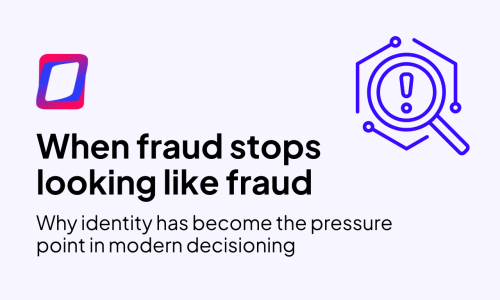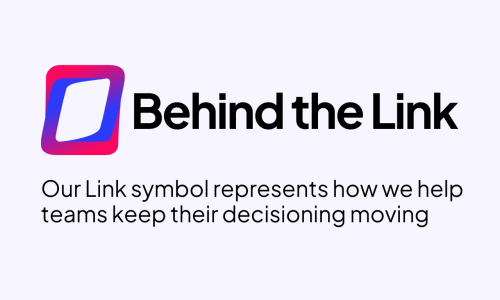The Real State of Banking in 2025: Measured Progress, Practical Growth
With insights and commentary from Marlise Avina, Senior Account Executive, GDS Link; Based on research and presentation by Bill Burgess, Managing Director and Co-Head of Financial Services Investment Banking Group, Piper Sandler & Co.
Bill Burgess laid out a clear-eyed view of banking at this year’s Bank Director C-Suite Summit in Nashville. His message cut through the usual noise. Banks are not just holding steady. They are working through challenges with practical strategies that are showing results.
“This year, I am hearing less about surviving and more about adapting with purpose,” says Marlise Avina, Senior Account Executive at GDS Link. “The conversation has shifted. Banks are not waiting for the perfect moment. They are using the tools and information they have now to make the right moves.”
Banks Are Performing Better Than Many Expected
Burgess started with the basics. The yield curve inversion that began in 2022 and dragged on for 564 trading days finally ended in September 2024. Historically, such inversions have been early warnings of recession. Its resolution removed a weight from the industry’s outlook.
Return on Assets (ROA) has recovered as well. The top 200 publicly traded banks now see median ROA above 1.1 percent, a clear improvement from 2023.
“I remember the caution just a year or two ago,” Marlise recalls. “Many banks were pulling back or tightening credit. To see ROA climb again shows just how steady lending practices have been. There was no rush to chase risky returns, and it’s paying off.”
Net Interest Margins (NIMs) are also in a healthier range, tracking closer to the 10-Year Treasury yield. Charge-offs and delinquencies remain low, showing that borrowers largely keep up despite interest rate shifts and inflation.
“Underwriting standards held firm, even when it was tempting to ease up,” Marlise adds. “That discipline is reflected across credit quality today.”
Liquidity and Capital Positions Remain Solid
Despite ongoing attention to unrealized bond losses, tangible common equity ratios remain above 8 percent. Price-to-Tangible Book Value (P/TBV) ratios have also improved, from 91 percent in March 2020 to 128 percent by April 2025.
“I speak with clients every week about liquidity concerns. The reality is most banks prepared early and avoided getting cornered,” Marlise says. “They are solving these challenges without panic, and the equity numbers prove that point.”
Mergers Have Restarted, But With a Clear Focus
Bank mergers, which had been slow since 2023, have begun to pick up. There were 134 announced deals by April 2025, compared to 98 last year.
“These are not casual mergers. Every deal I hear about has a clear strategy behind it,” Marlise notes. “Nobody is combining just to look bigger. They are looking for long-term financial value or operational benefits.”
A prime example is Columbia Banking System’s $2 billion acquisition of Pacific Premier Bancorp. The combined bank will hold $70 billion in assets and expects to increase earnings by 14 percent by 2026.
Regulatory reviews remain a factor, especially for banks nearing the $100 billion asset mark, where compliance costs increase significantly. “It is a careful balancing act,” Marlise observes. “Banks want to grow, but they are weighing the regulatory and capital trade-offs before moving forward.”
Capital Raising Has Become Selective
Unlike in past years, banks have not raised capital without a clear purpose. Most offerings now support specific needs like funding mergers or restructuring balance sheets.
“Banks are being thoughtful, and investors appreciate that,” Marlise says. “I have seen minimal appetite for capital raises without a clear and immediate use.”
Debt refinancing is also a growing focus. More than $9 billion in subordinated debt will be callable in 2025, with another $7.5 billion in 2026. Many of these notes face significant coupon increases, making refinancing a priority.
“This refinancing wave has been a big topic in my client meetings this spring,” Marlise shares. “Banks that can move early and secure lower rates will have an advantage with funding costs over the next few years.”
Regulation and Politics Remain Uncertain
Potential regulatory changes could affect banks, especially if political leadership shifts later this year. Proposals to raise the SIFI threshold or streamline oversight are being discussed but remain uncertain.
“Most of my conversations with banks include the phrase ‘wait and see’ when it comes to regulation,” Marlise says. “It is not something banks are betting on, but they are keeping an eye on possible changes.”
At the same time, trade policies are creating new risks. U.S. tariff rates have reached levels last seen in the 1930s, which could affect supply chains and business clients.
Scale Still Drives Valuation, But Smaller Banks Are Adapting
Large banks continue to receive stronger valuations. Institutions with over $250 billion in assets outperform smaller competitors in Price-to-Tangible Book Value ratios and Returns on Average Tangible Common Equity.
“For mid-sized and community banks, this has sparked new conversations around growth,” Marlise says. “Many are looking for ways to increase efficiency or build strategic partnerships rather than chasing size for its own sake.”
IPOs Are Rare and Cautious
Since 2020, very few banks have gone public, and most IPOs have priced conservatively.
“This is not surprising,” Marlise explains. “Investors want to see proven performance, not just growth potential. Small and mid-sized banks understand this and are taking a careful approach to raising capital.”
What to Expect: Steady Progress, Not Rapid Expansion
Burgess closed with a clear summary:
- Core profitability will likely remain stable.
- Merger activity will increase slowly and carefully.
- Debt refinancing will be an important focus.
- Regulation may shift, but planning should continue under current rules.
- Growth will come from practical steps, not bold leaps.
“This reflects what I see in the market daily,” Marlise adds. “The banks that are succeeding are not taking big risks. They are making one smart decision at a time.”
How GDS Link Supports Banks Through These Changes
As banks face refinancing events, growth planning, and potential mergers, decision speed and risk clarity are becoming even more critical.
“At GDS Link, we work with banks to improve how they assess risk and approve loans. We also help them make their lending and portfolio strategies more efficient,” Marlise explains.
GDS Link solutions include:
- Real-time analytics to strengthen credit decisions.
- Access to more than 200 data sources for better, faster information.
- Custom models that adjust as markets and regulations change.
- Ongoing monitoring of both model performance and lending policies.
- Workflow tools that reduce bottlenecks and manual steps.
“Banks today cannot afford delays or guesswork,” Marlise says. “We give them tools to make clear decisions based on data they can trust.”
Final Perspective from Marlise
“Banks do not need a perfect environment to succeed. They need solid information, clear goals, and steady execution. The ones following that path are moving forward, no matter what the headlines say.”
View our webpage here to learn more about how GDS Link supports banks.
Marlise Avina, Senior Account Executive, GDS Link
Marlise supports lenders with a hands-on, consultative approach. She understands banks’ everyday challenges and works closely with her clients to deliver practical solutions. Connect with Marlise on LinkedIn
Recent articles

When Fraud Stops Looking Like Fraud
Read article
Behind the Link
Read article
